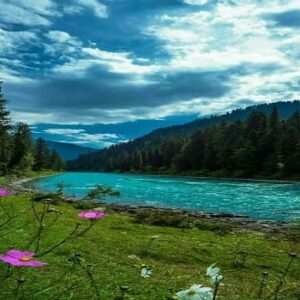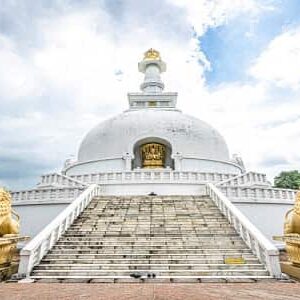Hemis Monastery, also known as Hemis Gompa, is a Tibetan Buddhist monastery located in the Ladakh region of northern India. It is one of the most famous and largest monasteries in Ladakh and is situated about 45 kilometers southeast of Leh, the capital of Ladakh. Hemis Monastery is not only a religious and spiritual center but also a popular tourist attraction due to its picturesque location and vibrant festivals.
Hemis Monastery is not only a place of religious significance but also a beautiful and serene destination for travelers interested in exploring the rich cultural and spiritual heritage of Ladakh and Tibetan Buddhism.
Visitors can reach Hemis Monastery by road from Leh, the nearest major town. The journey offers breathtaking views of the Ladakh landscape. It is advisable to check the local festival calendar if you wish to witness the Hemis Tsechu during your visit.
Table of Contents
ToggleHemis Monastery Overview
Nestled within the rugged embrace of the Himalayas, Hemis Monastery stands as a timeless sentinel of spiritual devotion and cultural richness. This ancient Tibetan Buddhist sanctuary, perched in the remote Ladakh region of northern India, holds a unique allure that transcends both time and place.
A Spiritual Oasis: Hemis Monastery, also known as Hemis Gompa, isn’t just a monastery; it’s a spiritual oasis. The air resonates with the whispers of ancient mantras, and the prayer flags fluttering in the Himalayan breeze carry prayers to the heavens. Founded in the 17th century by the visionary Stagsang Raspa Nawang Gyatso, a devoted disciple of the revered Je Tsongkhapa, the monastery is a living testament to the unwavering dedication of its founders.
Architectural Splendor: The architectural marvels of Hemis Monastery enchant visitors. Its buildings, with their intricately carved facades, stand as a testament to the ancient craftsmanship of the region. The main temple, known as the Tshogkhang, is a celestial sanctuary where a colossal statue of Guru Padmasambhava, the patron saint of Tibet, presides over a treasure trove of thangkas, murals, and sacred artifacts.
The Vibrancy of Hemis Tsechu: Hemis Monastery comes alive during the annual Hemis Tsechu festival, a spectacle that paints the barren landscape with vivid colors. Celebrating the birth anniversary of Guru Padmasambhava, this festival is a unique blend of mysticism and merriment. Dancers, adorned in elaborate, centuries-old costumes and masks, perform intricate choreographed routines, reenacting ancient tales and blessings. The festival is not just an event; it’s a gateway to another world.
Best Time to Visit Hemis Monastery
The best time to visit Hemis Monastery and the Ladakh region, in general, largely depends on your preferences and the experiences you seek. Ladakh experiences extreme weather conditions due to its high altitude, so it’s essential to plan your visit according to your interests, whether it’s exploring the lush landscapes in summer or witnessing the frozen beauty in winter. Here are the two primary seasons to consider:
Summer (Late May to September):
- Best for Sightseeing and Festivals: This is the most popular time to visit Hemis Monastery and Ladakh. During these months, the weather is relatively mild, and the region becomes accessible as snow melts from the high mountain passes.
- Hemis Tsechu Festival: If you want to experience the vibrant Hemis Tsechu festival, plan your visit in June or July, depending on the lunar calendar. It’s a unique and colorful event that celebrates Ladakhi culture and Buddhism.
- Treks and Adventure: Summer is ideal for trekking and outdoor adventures in the surrounding Himalayan landscapes. You can explore beautiful trails and enjoy the stunning scenery.
Winter (Late October to Early May):
- Best for Winter Enthusiasts: If you’re an adventure seeker and want to experience the region’s stark, frozen beauty, winter is the time for you. However, keep in mind that this is the most challenging time to visit due to extremely cold temperatures and road closures.
- Chadar Trek: Ladakh is famous for the Chadar Trek on the frozen Zanskar River during January and February. This trek offers a unique and challenging experience for those who can withstand the cold.
How to reach Hemis Monastery
1. By Air:
- Leh Kushok Bakula Rimpochee Airport (IXL): The closest airport to Hemis Monastery is Leh Airport, which is well-connected to major Indian cities like Delhi, Mumbai, and Srinagar. Many domestic airlines operate regular flights to Leh, especially during the tourist season (May to September). After arriving at Leh Airport, you can hire a taxi or use other local transportation options to reach Hemis Monastery, approximately 45 kilometers away.
2. By Road:
From Leh: Once you’re in Leh, you can hire a taxi or use local buses or shared cabs to reach Hemis Monastery. The road journey offers breathtaking views of the Ladakh landscape. It takes approximately 1.5 to 2 hours to reach Hemis Monastery from Leh by road, depending on road conditions.
Self-Drive: If you’re an experienced driver and have the necessary permits (inner line permits are usually required for non-locals to visit certain areas in Ladakh), you can also rent a vehicle in Leh and drive to Hemis Monastery. However, be prepared for challenging terrain and altitude considerations.




